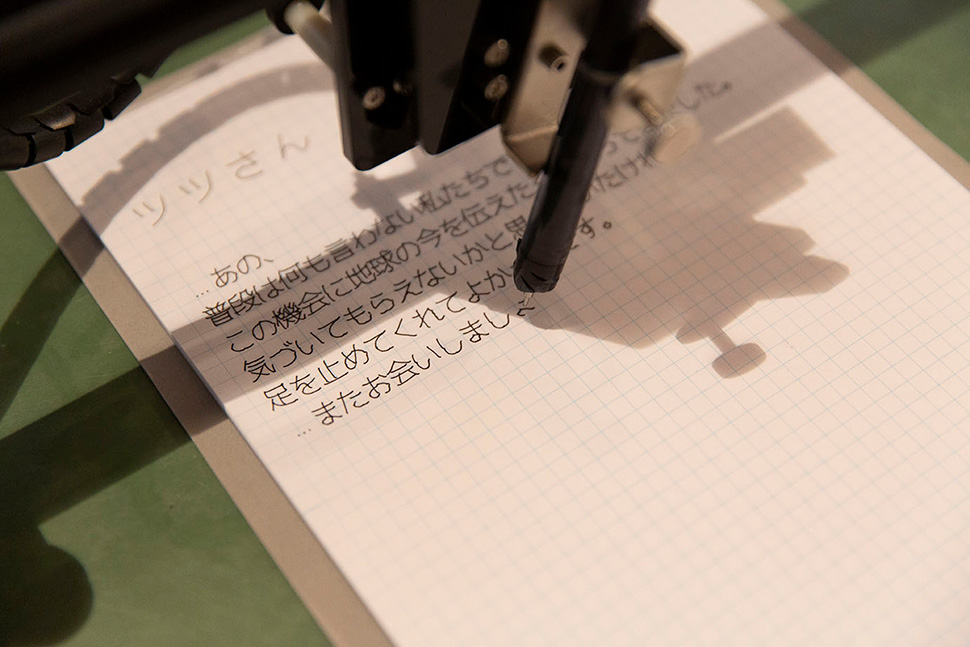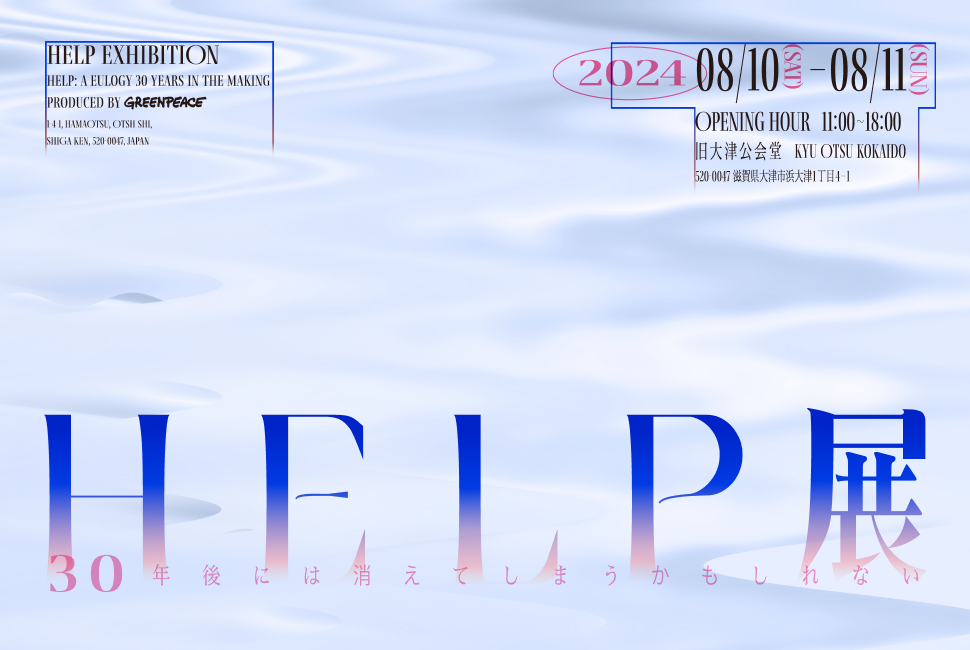“The era of global warming has ended; the era of global boiling has arrived,” said UN Secretary-General Guterres in July 2023. The changes in climate associated with this global boiling will manifest before us in many forms – floods and landslides caused by heavy rains, scorching heat waves and heat stroke, and the threat of new infectious diseases. Our goal with this project is to make visitors aware of how the effects of climate change are coming to Japan, based on the concept of “Climate Change and Art”. By presenting the challenges posed by climate change through the five senses, we hope to provide an opportunity for many people in Japan to find a strong motivation to explore sustainable lifestyles.
Greenpeace Japan will host “HELP: A EULOGY 30 YEARS IN THE MAKING in SHIGA” in Otsu, Shiga, a conceptual exhibition superimposing art and the climate crisis, from 10th to 11th August. The exhibition will feature several Japanese cultural phenomena which may be lost in 30 years partly due to climate change. A collaboration with a variety of artists and cultural figures, including plush toy artist Meriyasu Kataoka, Kiyoshi Miyasaka, the chief priest of Yatsurugi Shrine, and Yoshiharu Doi, a culinary expert, this exhibition allows you to ‘feel’ with your senses the climate crisis impacting Japan. We also plan to organize a talk event, with a theme of “Biwa Lake and Climate Change”, as a local topic in Shiga.
In addition, we are also running a project with high school newspaper clubs in Shiga Prefecture to learn and think about climate change together and turn it into newspaper articles. By capturing and communicating the issue of climate change from the perspective of young people, who are the future of the local community, we hope to provide more people with an opportunity to think about climate change in a familiar way.
ORGANIZER: Greenpeace Japan
Endorsed by Shiga Prefectural Government
DIRECTION: Creative Unit, HAKUA
DATE: 10.08.2024 – 11.08.2024
VENUE: Kyu-Otsu Kokaido(1-4-1 Hama-Otsu, Otsu-Shi, Shiga)
TIME:11:00 – 18:00
ADMISSION:Free
– Wheelchair accessible
– The exhibition is available in English
Production Cooperation: UESATSU (KV Graphic Designer), Kamemura Yoshihiro (Videographer), Shimada Ayako (Social Media Marketer ), Kitahara Kazuki (UMMM, page layout Graphic Designer)
WEBSITE:https://help-ex.jp/
INSTAGRAM:https://www.instagram.com/help_gpj/
What is “HELP Exhibition”?
A conceptual exhibition superimposing art and the climate crisis in Japan, held in Aoyama, Tokyo, from 17th to 26th November, 2023.More than 750 people visited the exhibition during the period, and the event received a great response, including coverage in numerous media outlets.
The exhibition was covered not only by major media and environmental media, but also by art and lifestyle media, and many visitors were intrigued by the angle of “climate change and art”
In addition, as a result of the social experiment in the reuse of exhibition materials, 59 out of 62 pieces of products and artworks were taken home by visitors, successfully demonstrating a new form of exhibition that does not waste resources.
Bringing the millennial-old tradition to the next 1000 years
“Lake Biwa and Climate Change”, an original theme for HELP in SHIGA
Lake Biwa has supported the lives and nurtured the culture of Shiga Prefecture.
In fact, its birth is believed to be 4 million years ago, making it one of only about 20 ancient lakes in the world.
Lake Biwa, with its long history, is home to a wide variety of living creatures, including endemic species.
The people of Shiga Prefecture, which is home to Lake Biwa, have been living in harmony with nature and nurtured a rich and sustainable culture.
Take, for example, the traditional fishing method of “eri fishing” in Lake Biwa, which has been practiced for more than 1,000 years since the Heian period.
This is a waiting style of fishing that utilizes the habit of fish to swim along obstacles when they encounter them, and prevents overfishing by catching fish only when they have entered an area called a “jar”.
The people of Shiga have carefully used the bounty of Lake Biwa to develop various traditions and cultures. These ancient practices have been recognized by the United Nations as the “Lake Biwa System” (World Agricultural Heritage) and by the Agency for Cultural Affairs as the “Culture of Water and Food” (Japan Heritage).
In recent years, however, the situation surrounding Lake Biwa has changed drastically, with the impact of lakeshore construction, the invasion of alien species, the massive overgrowth of water weeds, changes in water quality and lifestyle, and the degradation of surrounding forests. In addition, signs of climate change, such as extreme changes in temperature and precipitation patterns, have been observed in the prefecture, and it is expected that the impact of climate change will increase in the future.
For the blessings of Lake Biwa, which have continued for 1000 years, to continue for the next 1000 years. We hope that this exhibition will provide an opportunity to learn about the past and the present, and think about the future.
[ Talk Event ]
On Sunday, August 11, we will organize a talk event with the original theme of the HELP Exhibition in SHIGA, inviting a variety of guests. We hope this will bring you an opportunity to discover Lake Biwa unlike before. Please come and join us.
DATE: Sunday 11th, August, 14:00 -15:40
Capacity: 50 people
Guests:
- Shin-ichi Nakano, The Director of the Center for Ecological Research, Kyoto University.
- Tatsuya Komai, Executive Director of Fisher Architect. Representative of the Executive Committee for BIWAKO artist-in-residence
- Seiji Komatsu, a Lao cuisine chef.
- Nozomi Oshita, A student of Ritsumeikan University
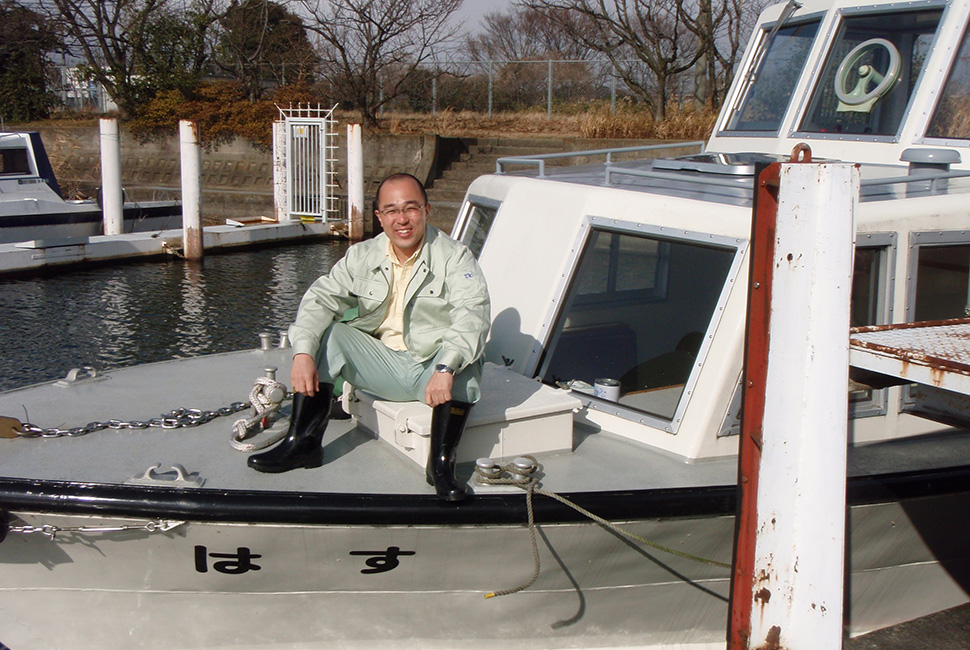
Shin-ichi Nakano
The Director of the Center for Ecological Research, Kyoto University. Professor of South Ehime Fisheries Research Center, Ehime University. He focuses on microbiological processes in aquatic ecosystems and elucidates the structure and function (material cycle) of microbial loops. The water bodies under study are lakes, coastal oceans, and rivers. In lakes and coastal oceans, he focuses on the food web of plankton and studies the ecology of phytoplankton and the food web of bacteria, microalgae, and protozoa. In rivers, his research on microbial food webs focused mainly on attached microorganisms. Received the 17th Biwako Prize for Ecology.
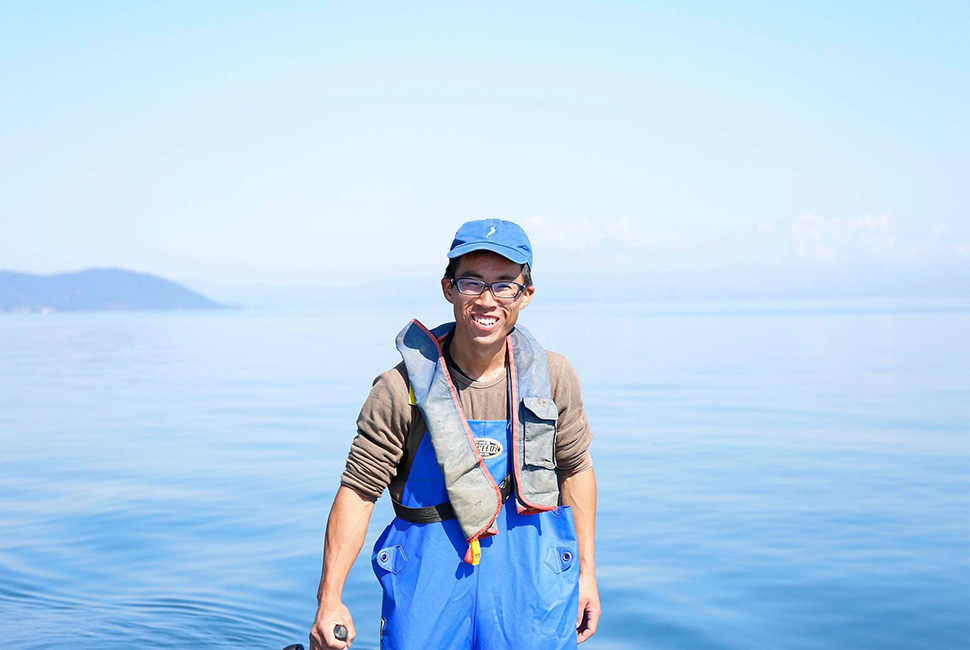
Tatsuya Komai
Executive Director of Fisher Architect. Representative of the Executive Committee for BIWAKO artist-in-residence. A member of Fisheries Cooperative Association of Shiga-machi. Born in Shiga, 1992. After graduating from the University of Shiga Prefecture with a degree in Environmental Architecture and Design and graduate school, he apprenticed himself to a fisherman in Lake Biwa and became independent in 2020. Under the philosophy of “delivering freshwater life from inside Lake Biwa,” he produces, sells, and provides fishing experience for about 30 species of lake fish based on the traditional fishing method of “eri fishing” in Lake Biwa as a fisherman, and accepts several trainees from fishermen.
In addition, he is also involved in the planning and operation of the BIWAKO Artist-in-Residence, an event to compare natural eels from all over Japan, and the transmission of audio media for learning about the connection between people and nature from a variety of perspectives, in order to convey the charm of living in Lake Biwa.
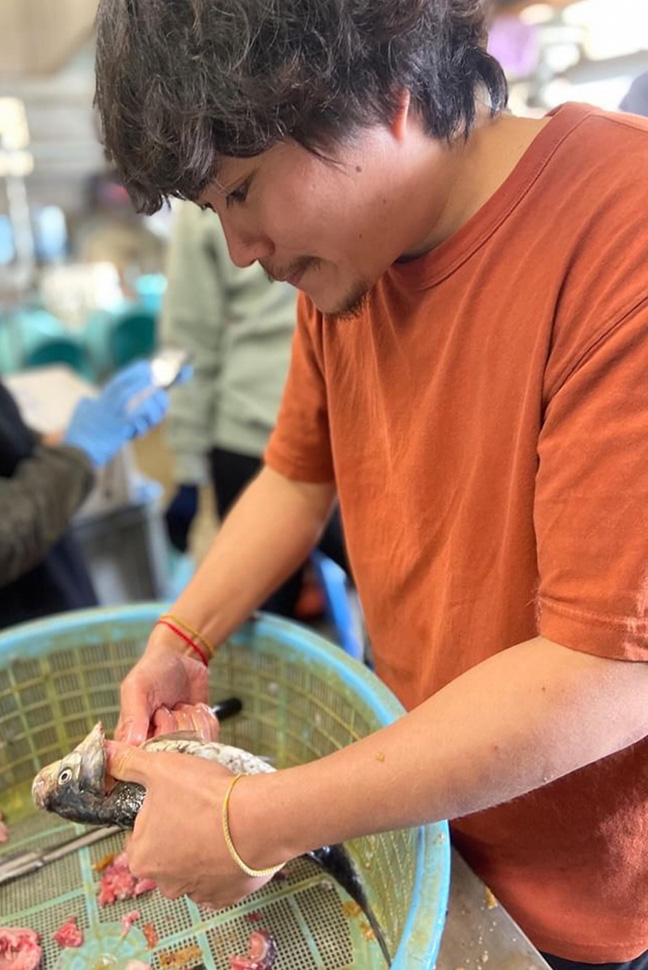
Seiji KOMATSU
Born in 1988 in Kyoto, a Lao cuisine chef. Interested in small creatures, especially freshwater fish since childhood. Also curious about cooking and cuisine, under the influence of his father who was a Japanese cuisine chef. In 2011 he entered ASAFAS (Graduate school of Asian and African area studies Kyoto University) and started research about the relationship between human society and ecosystem through focusing on utilization of fishery resources. Certified master degree of community studies. Got amazed by the Lao concept : thammasaat (respecting nature and natural ingredients harvested from the wild), and started a Lao cuisine career in a cooking activity which he organizes as Komatsutei Thammasaat. Pursuing to integrate Japanese natural/wild ingredients with Lao cuisine.
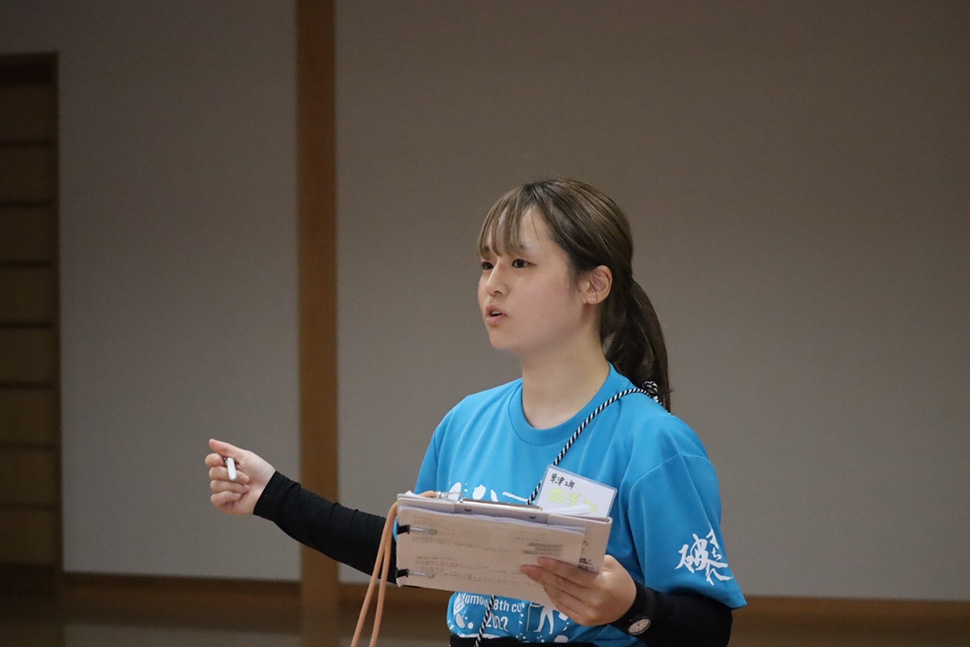
Nozomi Oshita
A student of Ritsumeikan University. Born in Ehime Prefecture in 2003. Aside from her major in Economics and specialization on overtourism at a seminar on behavioural economics, she has worked on the removal of non-native aquatic plants in Lake Biwa and bamboo forest maintenance activities in Nagano Prefecture as a member of the International Volunteer University Student Association (IVUSA).
Collaboration with High School Newspaper Clubs – workshop to think about climate change and communicate it
In order to think about climate change together with the young generation who will lead the future, this exhibition will collaborate with high school newspaper clubs in Shiga Prefecture, which have been remarkably active, winning the top prize at the National Culture Festival for Upper Secondary Schools in previous years.
In collaboration with Torahime High School, Higashi Otsu High School and Hachiman Technical High School, students will produce newspaper articles on the theme of “Lake Biwa and Climate Change.
The project will proceed in the following three steps, covering climate change from the high school students’ perspective and producing articles.
①Orientation
We will invite lecturers to share basic knowledge about Lake Biwa and climate change, as well as the concept and skills of newspaper production.
– Shin-ichi Nakano, the Director of Center for Ecological Research, Kyoto University
– Kazuhiko Matsumura, a journalist
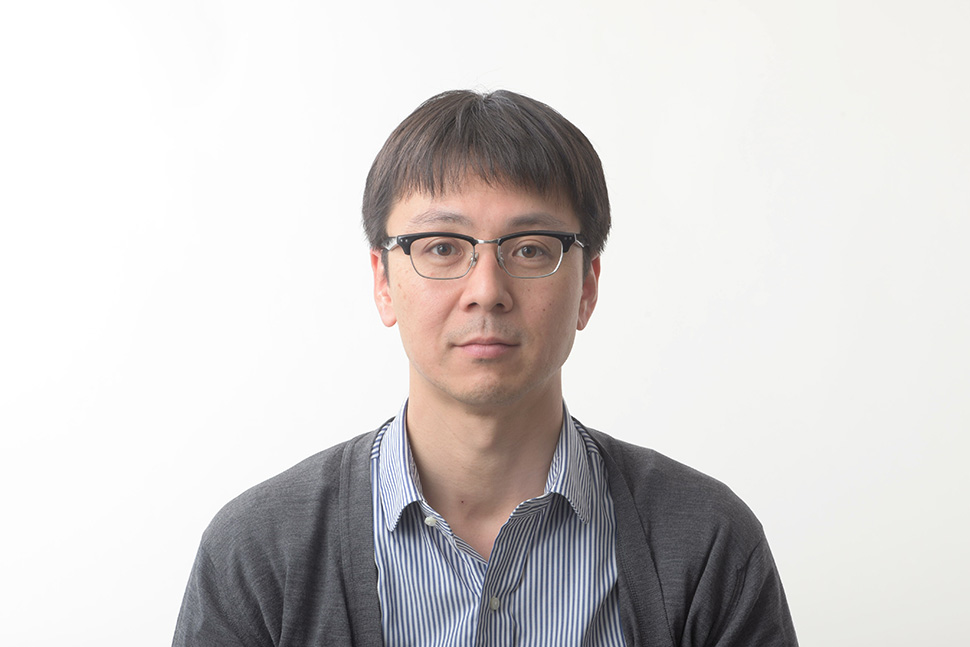
Kazuhiko Matsumura
Joined Kyoto Shimbun in 2003. He has worked on long-term projects on the themes of “life,” “social security,” and “care. In addition to covering dementia in newspapers and magazines, he held a photo exhibition “Threads of the Heart” at KYOTOGRAPHIE 2023, and was the Asian regional winner in the open format category of the World Press Photo (World Press Photo Contest) in 2024. His publications include “Hanaya (Kyoto Newspaper Publishing Center)” and “The Age of Seven Million People with Dementia: Toward a Society Where People Can Live Together (Kamogawa Publishing) ”
②Participation in HELP Exhibition in Shiga
Students will learn about and deepen their thoughts on “Lake Biwa and Climate Change” through participation in exhibitions, talk events, and interviews with speakers.
③Exclusive interviews and Newpaper making
We will provide support as needed, including introductions to interviewees, while each school will conduct its own interviews and write its own articles.
The prepared articles are planned to be published in the Kyoto Shimbun as a paid article, reporting on the HELP exhibition, so that it will be available for subscribers in the prefecture to read.
Showcased Works
1. HELP for Animals
Today, about one million species of animals and plants are in danger of extinction, and biodiversity is disappearing at the same rate as during the mass extinction that wiped out the dinosaurs 65.5 million years ago. In this work, these disappearing animals are introduced through plush toys created by Kataoka Meriyasu for this exhibition. The plush toy animals in this exhibition are also available for purchase. Visitors to the exhibition will be able to purchase them via lottery selection after the exhibition is over.
Collaborating artist: Plush Toy Artist Kataoka Meriyasu
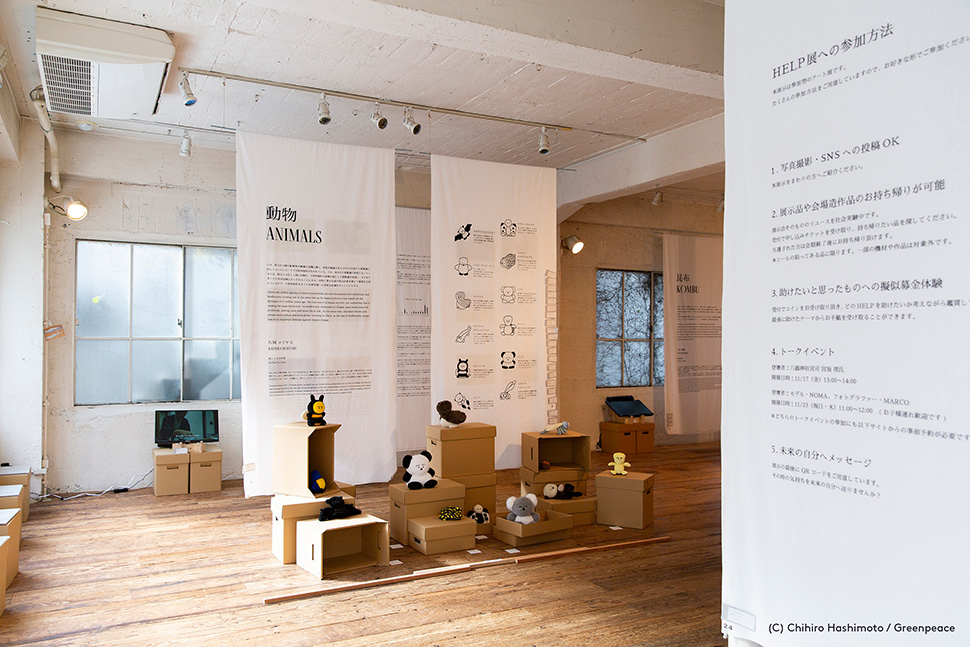
2. HELP for Sushi
Sushi, the star of Japanese cuisine, is also suffering from the effects of climate change. More and more fish are expected to disappear due to rising sea water temperatures and ocean acidification, and more detailed research is required. In this work, we created sushi made of resin objects with varying degrees of transparency, relative to the likelihood of their disappearing in the future. This work allows visitors to intuitively feel the effects of climate change that will become apparent in our daily lives.
There will also be a survey of people’s favourite sushi. Just how much of it will still be around in 30 years?
Collaborating Artist: Creative Unit HAKUA
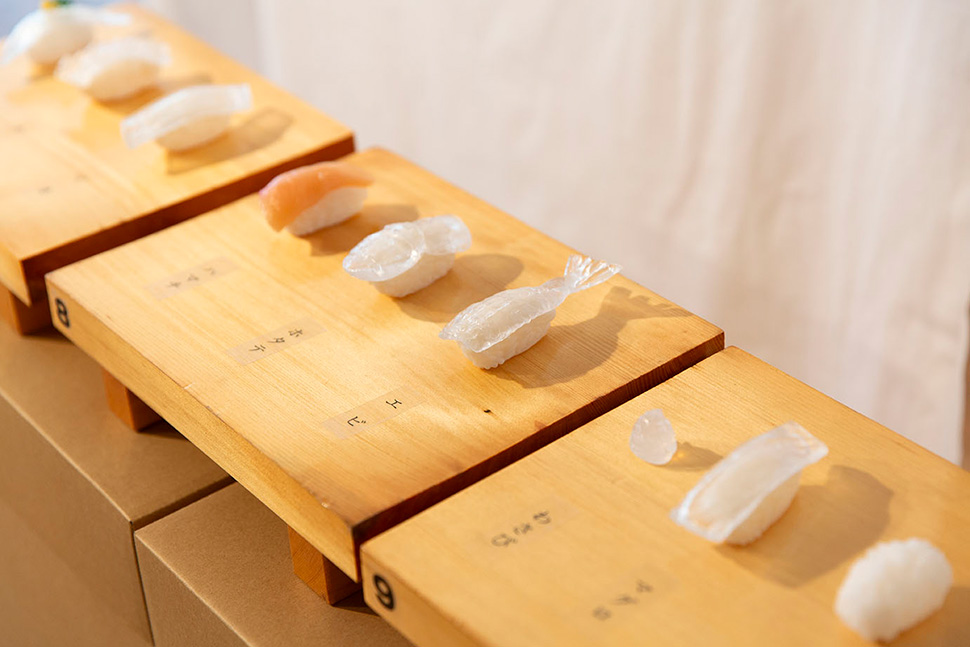
3. HELP for Lake Suwa’s miwatari Ritual
When Lake Suwa in Nagano Prefecture is completely frozen over, the ice breaks apart from the southern toward the northern shore, creating a large vein of icy shards that range from 30 cm to 180cm in height. This is known as miwatari, and the Shinto ritual associated with it is designated as an Intangible Folk Cultural Asset of Suwa City. In recent years, the appearance of miwatari has been decreasing due to climate change. In this work, the exhibition is based on the reflections of Kiyoshi Miyasaka, the chief priest of Yatsurugi Shrine, who assesses the appearance of miwatari, and the records of miwatari that have been meticulously kept since 1683. We hope this exhibition will provide visitors with an opportunity to think not only about Lake Suwa but also about Japan’s disappearing traditional culture.
Featuring: Chief Priest of Yatsurugi Shrine, Miyasaka Kiyoshi
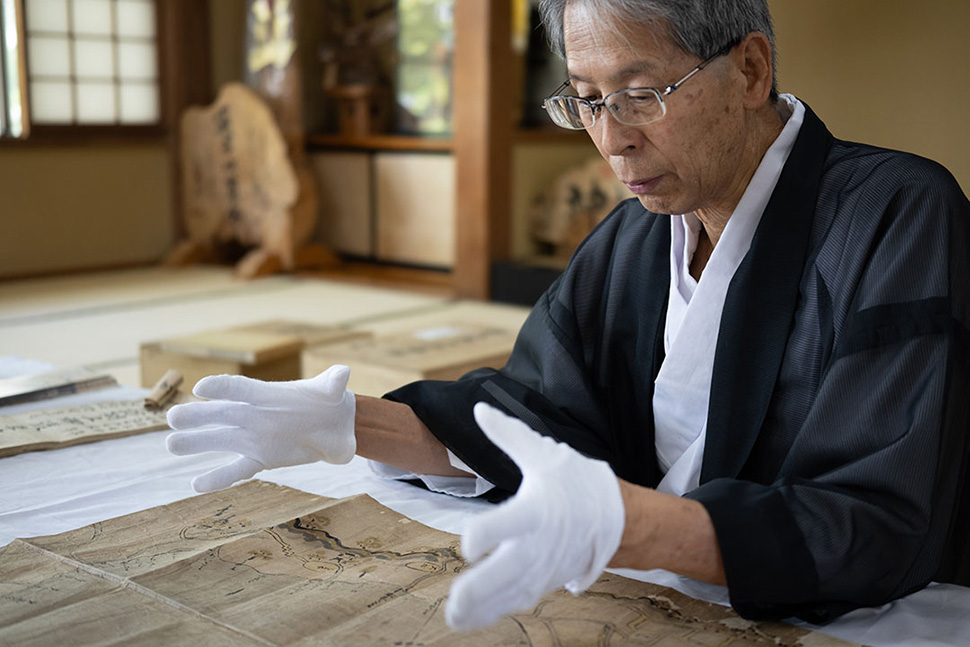
4. HELP for Kombu
Kombu may also disappear due to the effects of climate change. Kombu has long been popular as soup stock and has nurtured Japan’s food culture through the ages. The seaweed beds formed by kombu and other seaweeds are also habitats for many living creatures. Could the disappearance of kombu affect Japan’s food culture or even the spiritual nature of the Japanese people? We asked culinary expert Yoshiharu Doi to answer these questions.
Featuring: Culinary Expert Doi Yoshiharu
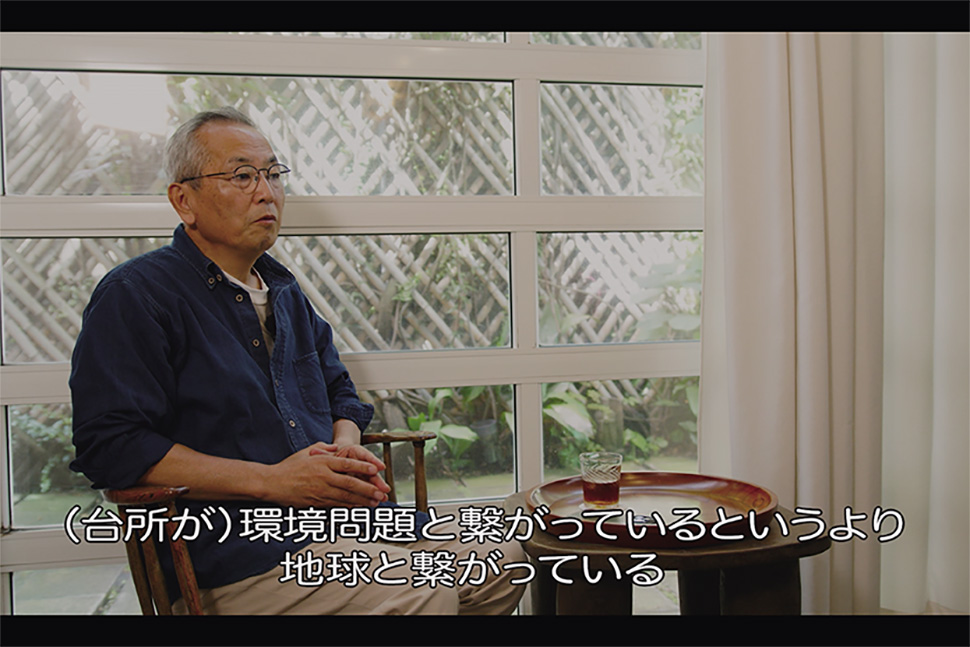
Participation in Exhibitions
This exhibition offers a variety of participatory programs to make climate change more accessible and relatable to visitors.
① Join a social experiment in exhibition reuse by taking home exhibits and artwork
We are aware that the exhibition itself consumes energy and generates waste, and we aim to reduce the use of new and discarded materials as much as possible, while sharing the process and methods with as many visitors to the exhibition as possible. During this exhibition, we will conduct a social experiment in collaboration with visitors to reduce waste as much as possible through the reuse of materials, by inviting visitors to purchase or take home the exhibited works and artwork.
The HELP exhibition will become a collaborative project with visitors, as ideas for reusing the exhibits and artwork will increase over time. We hope you will visit the exhibition as many times as you like during the exhibition period.
Note: Some works will be available for purchase for a fee. Rental equipment and other items cannot be taken home.
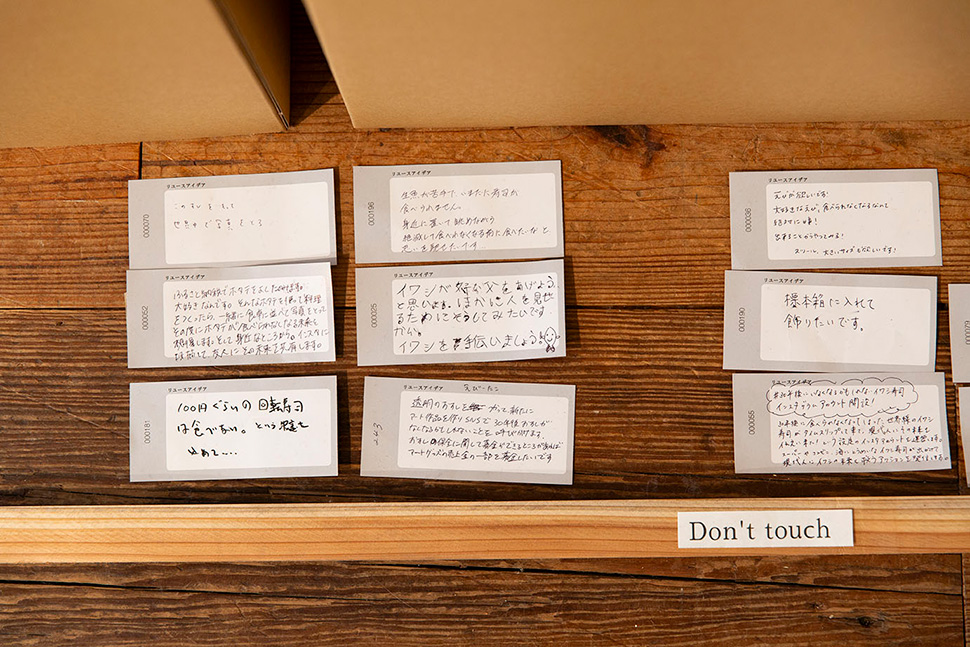
② Simulated fundraising for the things you want to help
You will be given an original coin at the entrance and are invited to keep it with you as you view the exhibition. At the end of the exhibition, you will be able to put the coin into a donation box for the things you want to help.
You will receive a thank you letter from the item which you donated to, written on the spot by a mechanical pencil.
